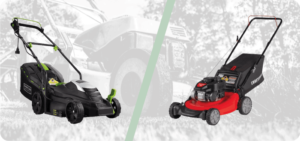
Tool maintenance and care tips are essential for anyone looking to extend the lifespan and efficiency of their tools. Properly maintained tools not only perform better but also ensure safety during use. In this guide, we will explore fundamental maintenance techniques, recognize signs that indicate when your tools need attention, and offer specific care tips tailored to various types of equipment.
From cleaning and storing your tools to specialized care routines for tools used in stone brick projects or yard equipment, we’ve got you covered. Whether you’re a beginner or a seasoned DIY enthusiast, understanding these maintenance practices will keep your tools in top shape and ready for any task.
Tool Maintenance Basics

Proper maintenance and care are crucial for ensuring the longevity and efficiency of your tools. Regular upkeep not only prolongs their life but also enhances performance, making your tasks easier and more enjoyable. Understanding the basics of tool maintenance can save you money over time and prevent frustrating breakdowns during projects. One of the key aspects of tool maintenance revolves around recognizing the signs of wear.
Tools can show various indicators that they need attention, including unusual noises, reduced performance, or physical damage. Regularly inspecting your tools for these signs is essential in determining when maintenance is necessary.
Essential Maintenance Techniques
Implementing a few fundamental techniques can significantly prolong the life of your tools. These practices not only enhance performance but also ensure safety during use. Here are some important techniques to consider:
- Regular Inspection: Periodically check your tools for any visible signs of wear such as rust, cracks, or loose components.
- Lubrication: Keeping moving parts well-lubricated reduces friction and wear, enhancing tool efficiency. Use appropriate lubricants based on the tool’s requirements.
- Sharpening Blades: Keeping blades sharp not only makes tasks easier but also reduces the risk of damage to the tool and the material being worked on.
Signs of Wear and Indicators for Maintenance
Recognizing the signs that a tool requires maintenance is vital for proactive care. Some common indicators include:
- Reduced Performance: If a tool is not performing optimally, it may be time to inspect and service it.
- Unusual Noises: Sounds like grinding or rattling can be signs of wear and should not be ignored.
- Physical Damage: Look for cracks, bends, or corrosion that can compromise the tool’s integrity.
Cleaning and Storing Tools
Cleaning and proper storage of tools are essential for preventing rust and damage. Following these steps will help maintain their condition:
- Cleaning: After each use, wipe down tools with a dry cloth to remove dirt and moisture. For deeper cleaning, use soap and water, ensuring all parts are thoroughly dried afterward.
- Rust Prevention: Apply a thin layer of oil to metal surfaces to create a barrier against moisture, which can cause rust.
- Proper Storage: Store tools in a dry environment, ideally in a toolbox or on a pegboard, to avoid exposure to elements that lead to rust and wear.
Regular maintenance extends the lifespan of your tools, ensuring they remain safe and effective for years to come.
Specific Care Tips for Different Areas

Maintaining tools effectively is essential to ensuring their longevity and efficiency, particularly when they are used in specific projects or under various conditions. This section provides targeted care tips focused on tools used in stone brick projects, yard equipment, and storage solutions for your garage to enhance organization and accessibility.
Maintenance Routines for Tools Used in Stone Brick Projects
Tools used in stone brick projects, such as trowels, chisels, and masonry saws, require specific maintenance to perform optimally. Regular cleaning and proper care can prevent damage and extend the life of these tools. Start by cleaning tools immediately after use to remove mortar, dirt, and dust. A stiff brush can be used to scrub the surfaces, followed by rinsing with water.
For more stubborn residues, a diluted vinegar solution can effectively break down any cement deposits. After cleaning, dry the tools thoroughly to prevent rust, particularly on metal parts.To keep cutting tools like masonry saw blades in top condition, it’s vital to lubricate them with machine oil after cleaning. This reduces friction and helps to maintain their sharpness. Sharpen chisels regularly to ensure they provide clean cuts, and inspect all tools for damage or wear before storage.
Seasonal Maintenance for Yard Equipment
Yard equipment requires seasonal attention to ensure it operates efficiently year-round. Proper maintenance routines change with the seasons, particularly in climates with distinct weather patterns.In spring, perform a thorough inspection and cleaning of all equipment. Change the oil in lawnmowers, check spark plugs, and sharpen blades. Replace any worn-out or damaged parts before the heavy usage season begins. Summer months call for regular checks on fuel levels and air filters, as they can become clogged with dust and debris.
Ensure that all equipment is cleaned frequently to prevent overheating, particularly for string trimmers and hedge clippers.As fall arrives, prepare equipment for winter by draining fuel, cleaning, and storing them in a dry place. It’s wise to cover larger equipment with tarps or protective covers to shield them from moisture and dust.
Storage Options for Tools in a Garage Setting
Effective storage solutions are crucial for maintaining an organized garage and ensuring tools are easily accessible. Proper organization not only saves time but also protects tools from damage.Consider using pegboards to hang tools vertically, allowing for easy visibility and access. Group similar tools together, such as hand tools on one board and power tools on another, to streamline your workflow.
Shelving units can be used to store bulkier items, keeping the garage floor clear and organized. Ensure that shelves are at a height that minimizes bending or reaching for frequently used tools. Use clear plastic bins for smaller items, labeling them for easy identification. For lawn care equipment, designate a specific corner of the garage for these tools, ensuring they are stored upright to avoid damage.
Incorporating magnetic strips can also be an effective way to store metal tools like scissors and pliers, keeping them off surfaces and readily accessible. By implementing these organizational strategies, you can create a functional and efficient workspace in your garage.
Care for Equipment Around Home Amenities
Maintaining home amenities like swimming pools, spas, and windows is crucial for ensuring their longevity and functionality. Proper care not only enhances the aesthetic appeal of your property but also promotes safety and efficiency. This section Artikels essential practices for equipment maintenance around these amenities, as well as optimal storage solutions for tools.
Maintenance Practices for Swimming Pools and Spas
Regular maintenance of swimming pools and spas is essential for keeping the water clean, the equipment functional, and the overall environment safe for users. This involves several key tasks, including equipment checks, water balance monitoring, and cleaning routines.To effectively maintain your pool or spa, consider the following practices:
- Water Testing: Regularly test the water chemistry to ensure proper pH levels, alkalinity, and chlorine levels. This can be done using test strips or liquid test kits.
- Filter Maintenance: Inspect and clean the filter regularly. Depending on the type of filter (sand, cartridge, or diatomaceous earth), maintenance routines will vary. Ensure to follow manufacturer guidelines for cleaning frequency.
- Surface Cleaning: Clean the pool or spa surfaces to remove algae and debris. Use a pool brush and vacuum to keep the surfaces spotless.
- Pump Inspection: Check the pump for any leaks or unusual noises. Make sure it operates efficiently and replace any worn parts as needed.
- Heating System Care: For spas, inspect the heating element and control panels regularly to ensure they function correctly and safely.
Tools and Equipment for Home Window Maintenance
Maintaining home windows involves ensuring they are clean, functional, and energy-efficient. The right tools can make this task easier and more effective. Here are some essential tools and how to use them:
- Window Squeegee: Use a squeegee with a rubber blade to remove water and cleaning solution from glass surfaces, ensuring a streak-free finish.
- Microfiber Cloths: These are perfect for wiping down window frames and glass without scratching surfaces. They also trap dirt effectively.
- Putty Knife: A putty knife can be used for scraping off old paint or caulking. Be gentle to avoid damaging the glass or frame.
- Caulking Gun: Use a caulking gun to apply fresh caulk around window frames, sealing any gaps to improve energy efficiency.
- Extendable Pole: For hard-to-reach windows, an extendable pole can hold a squeegee or microfiber cloth, allowing you to clean without a ladder.
Storage Solutions for Outdoor Maintenance Tools
Proper storage solutions for tools used in maintaining outdoor areas like gardens and patios can extend their lifespan and keep your workspace organized. Here are some effective options to consider:
- Tool Shed: A dedicated tool shed can protect your equipment from the elements. Ensure it is well-ventilated to prevent moisture buildup.
- Wall-Mounted Racks: Installing wall-mounted racks or pegboards in your garage or storage area can keep tools visible and easily accessible.
- Tool Boxes: Use tool boxes with compartments to store smaller tools and accessories. This helps prevent loss and keeps everything organized.
- Storage Bins: Heavy-duty plastic storage bins are great for larger items like hoses, lawnmowers, or garden equipment. Choose bins with secure lids to keep out pests.
- Vertical Storage Solutions: For items like shovels and rakes, consider vertical storage systems that allow for easy access without taking up much floor space.
Final Wrap-Up
In conclusion, mastering tool maintenance and care tips is key to ensuring the longevity and effectiveness of your tools. By implementing these techniques, not only do you protect your investment, but you also enhance your overall project outcomes. Remember, a well-cared-for tool is a reliable tool, ready to assist you in all your endeavors.
Answers to Common Questions
How often should I clean my tools?
It’s recommended to clean your tools after each use to prevent rust and buildup.
What are the signs that my tool needs maintenance?
Common signs include rust, unusual noises during operation, and dull blades or bits.
Can I use household cleaners on my tools?
Yes, but make sure they are suitable for the material of your tools and follow up with proper lubrication.
Should I store my tools in a damp area?
No, always store tools in a dry place to avoid rust and damage.
What’s the best way to organize tools in my garage?
Use shelves, pegboards, and toolboxes to keep your tools organized and easily accessible.





